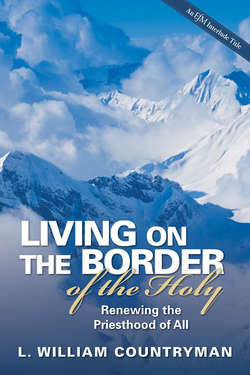Читать книгу Living on the Border of the Holy - L. William Countryman - Страница 12
На сайте Литреса книга снята с продажи.
3 The Priesthood of Christ
ОглавлениеAccording to the Law of Moses, Jesus was not a priest at all in the sacramental sense. He belonged to the tribe of Judah, not Levi, and to the family of David, not Aaron. As such, he had no more access to the inner parts of the Temple or knowledge of its rites or authority to preside over them than any other male lay Israelite. He was not, in other words, one of those to be reckoned particularly close to the sacred. Our reports of Jesus’ life and ministry say that he taught occasionally within the perimeters of the Temple, but only in those areas open to the Jewish lay public. On one occasion, he assumed a kind of revolutionary authority in the Temple by driving out the people who changed money and sold sacrificial animals there.60 This act infringed on the prerogatives of the priests and no doubt had much to do with his eventual arrest and crucifixion. But he was no priest of religion—at least not of the sacrificial rites of ancient Israel.
There was another kind of “priest of religion,” however, in the Israel of Jesus’ time—the rabbi. I put the term “priest” in quotation marks because, although the rabbi was a priest in the sense in which I am using the word, Jews of Jesus’ time would not have called rabbis “priests.” For them, the term “priests” referred strictly to persons authorized to offer sacrifice at temples, whether Jewish or Gentile, and not to the other kinds of religious specialists who fall into this category as I am using it. The rabbinic “priesthood” was focused not on Temple and sacrifice but on the synagogue and on instruction (torah
